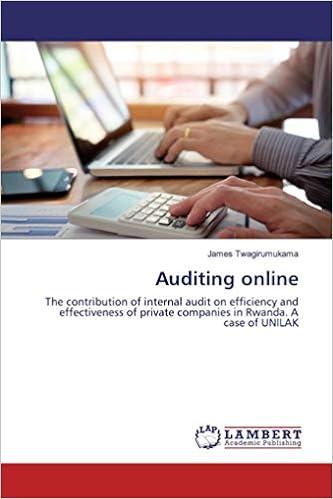Question
Overview How we account for and present debt and equity investments on the financial statements is an important part of U.S. GAAP as we move
Overview
How we account for and present debt and equity investments on the financial statements is an important part of U.S. GAAP as we move towards an asset/liability approach as to how certain transactions are recorded. The application of the principles of fair value accounting in regards to these assets can be extremely important in how investors determine a company's financial position. It is an area that has had some interesting ramifications in the financial world.
Instructions
Buckingham Company holds a large portfolio of debt securities as investments. The total fair value of the portfolio is greater than its total original cost, even though some of the individual debt securities have decreased in value. Julia, the CFO, and Sam, the Controller, are near year-end in the process of classifying, for the first time, this investment portfolio in accordance with U.S. GAAP. Julia wants to classify those securities that have increased in value during the period as trading securities in order to increase net income this year, and wants to classify those that have decreased in value as held-to-maturity.
Sam, on the other hand, disagrees. He wants to classify the securities that have decreased in value as trading securities and those that have increased in value as held-to-maturity. He contends that the company is having a good earnings year and the recognizing the losses will help to smooth the income this year, and thus the company will have built-in gains for future periods when the company may not be as profitable.
Answer the following questions:
Will classifying the portfolio as each proposes actually have the effect on earnings that each says it will? Why or why not?
Is there anything unethical in what each of them proposes? Who are the stakeholders affected by their proposals? Be sure to include a solid analysis of current U.S. GAAP standards that the company should be following for debt investments, including properly cited references.
Assume that Julia and Sam end up properly classifying the entire portfolio into proper categories, but then each makes a different proposal just before year end: Julia wants to sell those securities with gains and Sam wants to sell only those with losses to accomplish their individual desired effects on net income. Is this unethical? Why or why not?
Is the financial community in the U.S. in agreement with the current U.S. GAAP standards as to how to present investments at fair value (often called mark-to-market accounting)? What impact did these standards have in the 2008 financial crisis? Research this on the internet and summarize what you find, being sure to include properly cited references.
Step by Step Solution
There are 3 Steps involved in it
Step: 1

Get Instant Access to Expert-Tailored Solutions
See step-by-step solutions with expert insights and AI powered tools for academic success
Step: 2

Step: 3

Ace Your Homework with AI
Get the answers you need in no time with our AI-driven, step-by-step assistance
Get Started


